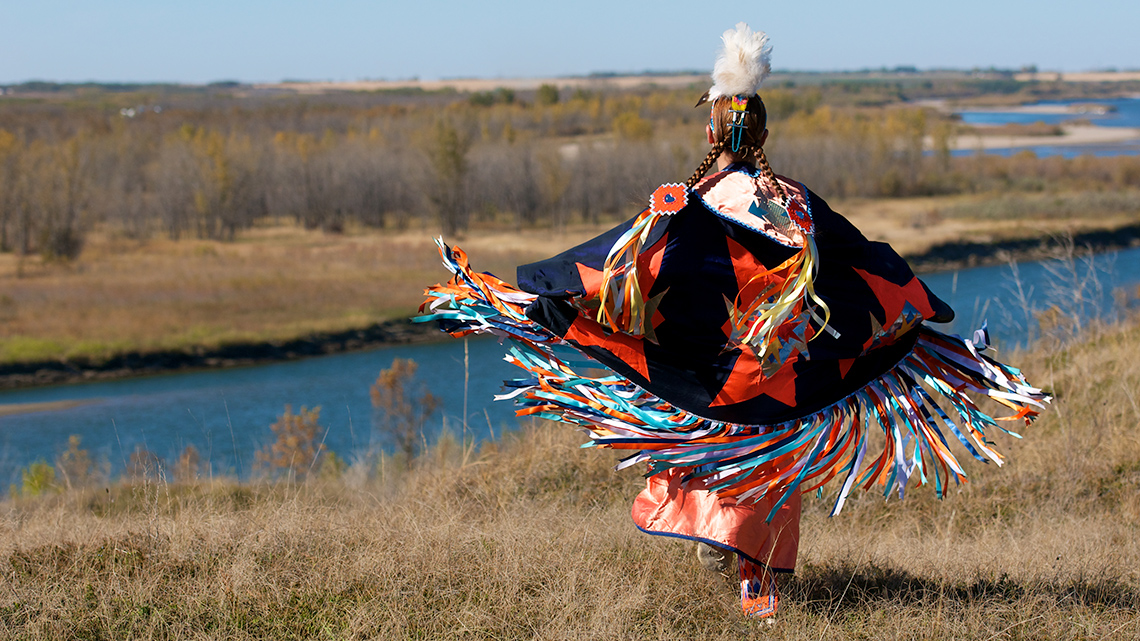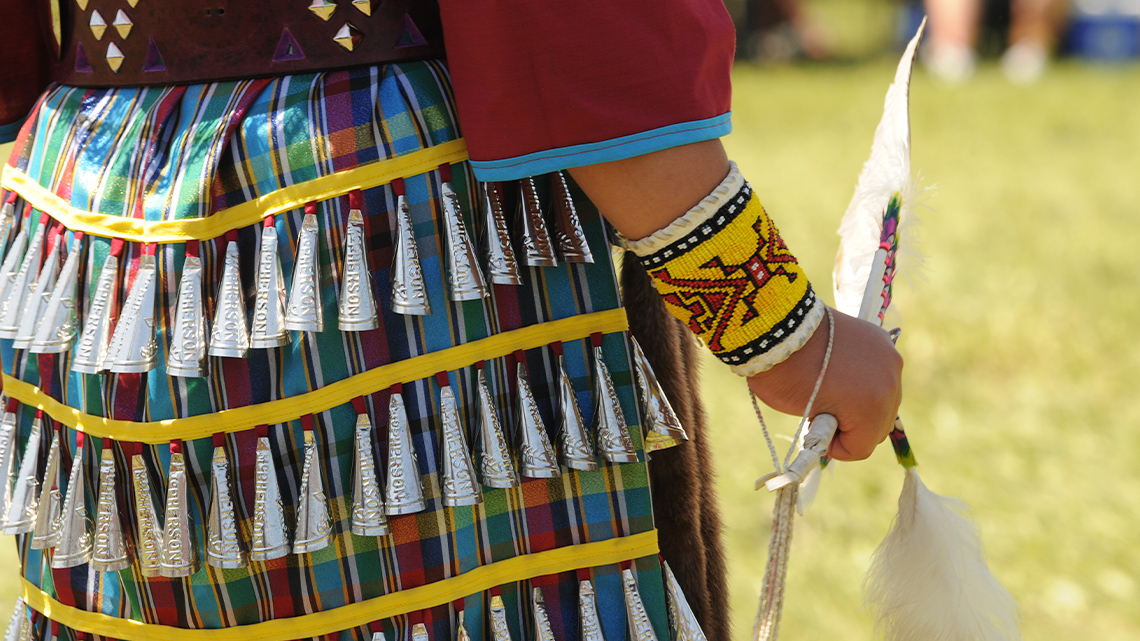Minds On
Task: Powwows – a gathering of nations
Have you been to a powwow before?
Press ‘Powwow’ to learn more.
Powwows bring many Indigenous nations and communities together to celebrate traditional music, dances, regalia, food, and more. They are held from coast-to-coast and each powwow is different based on which community hosts the powwow and which nations attend.
Let’s learn more about the important cultural tradition of powwows by exploring the following TVOkids video.
Ricky will teach Emil about some of his Anishinaabe traditions by attending a powwow together.
Check out this video entitled "Powwow" from the TVOkids series, It's My Party, to learn more.
What is something you learned about powwows from exploring the video you accessed?
Action
Task: Indigenous teachings, traditions, and knowledge

A powwow is one example of a cultural tradition that many Indigenous peoples practice and are a part of today.
Press the 'Indigenous' button to learn more about this word.
Press each title to learn more about these communities.
First Nations, Métis, and Inuit traditions are all very different based on the specific community and cultural group they come from.
Each community has a unique way of practicing their traditions and passing down the knowledge and teachings from one generation to the next.
Question: What are three things about Indigenous traditions and culture that you learned from the "Powwow" video?
Press ‘Hint’ to access an attribute of Indigenous traditions.
Let’s learn more about specific Indigenous traditions from First Nations, Inuit, and Métis kids who love their culture and where they come from. Choose three of the videos that follow from the TVOkids series Raven's Quest. Think about what teachings and knowledge come from these traditions.
Press the 'Question' button for another question you should think about as you explore the videos.
Press the title of the Raven’s Quest video you would like to access.
Now complete the 3-2-1 Activity in your notebook or using the following fillable and printable document. If you would like, you can use speech-to-text or audio recording tools to record your thoughts.
Press the ‘Activity’ button to access the 3-2-1 Activity.
Consolidation
Task: Questions to think about

Think about what you have learned about Indigenous teachings, traditions, and knowledge.
- Why do you think it is important for us to learn about Indigenous traditions from Indigenous people?
- At one time, the government did not allow some of the traditions discussed in the videos. How do you think this affected traditions and families?
- From what you learned, what is something that you could teach someone else?
- Describe two of the Indigenous traditions you learned about. What are some of the teachings and knowledges that were shared for each?
Reflection
How do you feel about what you have learned in this activity? Which of the next four sentences best matches how you are feeling about your learning? Press the button that is beside this sentence.
I feel...
Now, record your ideas about your feelings using a voice recorder, speech-to-text, or writing tool.